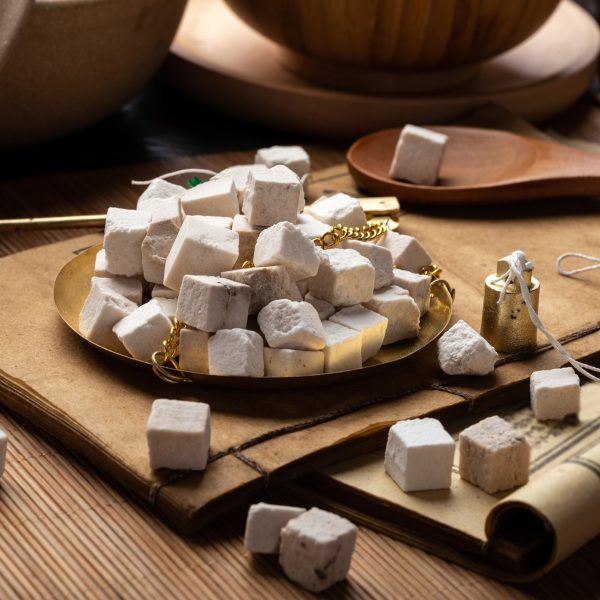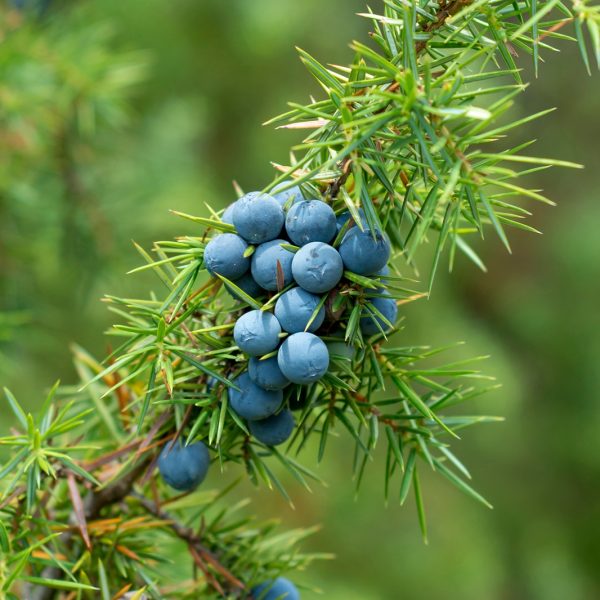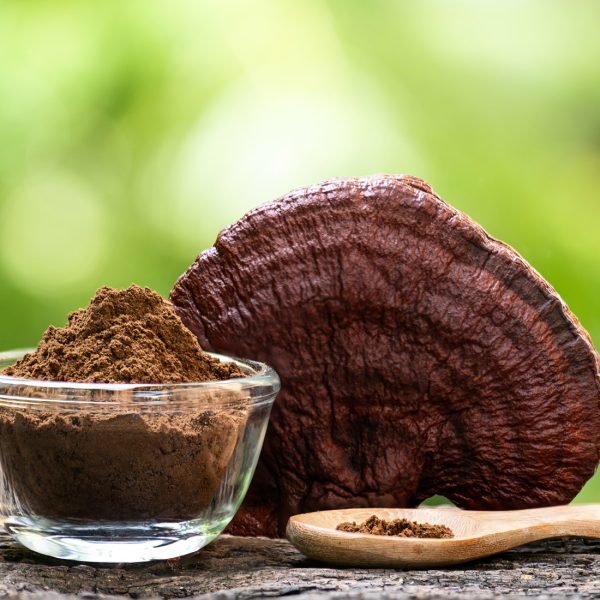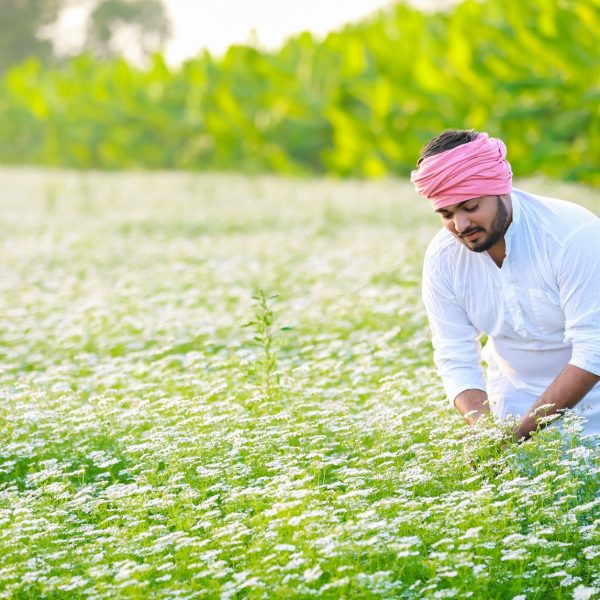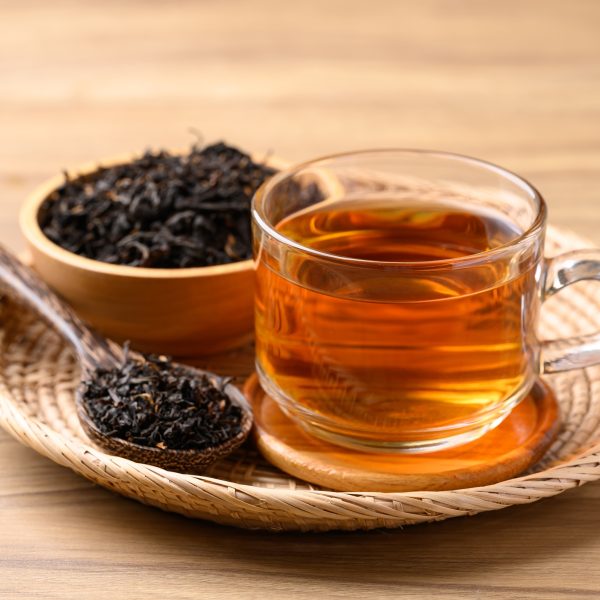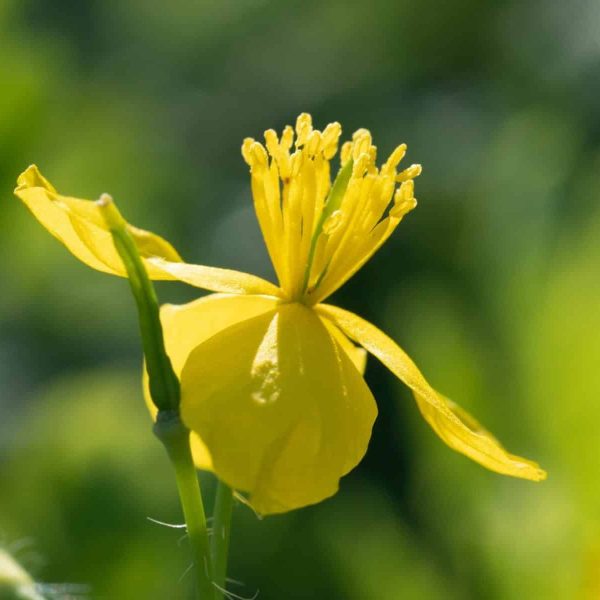-
How does it feel?
As soon as a leaf is broken off the fresh plant, it immediately presents with a sharp, sour and pungent smell, eliciting a warning to the potency of the medicine. The bright yellow sap quickly appears, gradually darkening to orange as it is exposed to the air. Apply the sap to the skin and there is no immediate sensation, despite the gentle caustic action taking place. The sap gradually turns a dark brown, which stains the skin for several hours.
The tincture is very bitter and acrid. The bitterness is tasted immediately and the sour, acrid taste develops over a few seconds and remains in the mouth and throat once swallowed. These tastes are mainly due to the alkaloids, with some of the sourness coming from the flavonoid constituents (1). The bitterness has a powerful stimulating effect on all the digestive organs, and the sensations of digestion are felt rapidly. The acrid taste, like bile in the back of the throat, indicates a relaxing, antispasmodic action (2). The stimulation of digestion function coupled with the relaxation of the digestive tract can be felt quickly and the cathartic feeling continues for several hours after consuming.
The tea gives off an inviting, salty, mealy and nourishing smell from the deep green/yellow liquid, due to the water soluble minerals. This is deceptive, as the drink is very bitter and acrid, similar to the tincture. It is not a pleasant drink, but would provide a welcome relief to bloating, indigestion or bowel spasms after a meal.
-
What can I use it for?

Greater celandine (Chelidonium majus) Greater celandine is included on the list of Schedule 20 part 2 herbs in the European Human Medicines Regulation 2012 (3). These herbs may only be used by a qualified medical herbalist in their prescriptions, following a one-to-one consultation, and are not permitted for general sale (3).
Greater celandine is typically used internally for liver and gallbladder disorders, indigestion (dyspepsia), loss of appetite, detoxification, gastroenteritis, and constipation (4).
Greater celandine is bitter, cholagogue and choleretic, which stimulates bile production in the liver and subsequent release from the gallbladder. This process helps to remove minor obstructions from the gallbladder, but needs to be used with caution in cases of large gallstones which can become lodged in the bile duct. The alterative, purgative and diuretic actions are due to the increased production of bile, increased diuresis (urination) and sweating, which all enhance the removal of toxins from the body (5,6). It can be used for dyspeptic issues such as bloating, indigestion and flatulence (7).
The dark yellow-orange sap can be used fresh from the plant by splitting a leaf or stem. This can be used to treat warts, verrucae, corns and herpes, or made into an oil or balm for daily application (5,8). The sap contains protease (protein-dissolving) enzymes that destroy malignant viruses, and therefore the application should be restricted to the affected area and not used on broken skin or wounds (8).
Greater celandine should not be confused with lesser celandine (Ranunculus ficaria), which is in the Ranunculaceae family, and they are unrelated.
-
Into the heart of greater celandine

Greater celandine (Chelidonium majus) The deep yellow-orange latex in the leaf and stem is due to the presence of the alkaloids benzophenanthridine and protoberberine (9,10). In vitro, the fresh sap and isolated alkaloid constituents have demonstrated activity against adenoviruses and herpes simplex virus type I (HSV-1), which is the virus responsible for cold sores (9). The isolated alkaloids with antiviral actions are highest in the fresh plant material (11).
The antispasmodic activity of greater celandine is primarily attributed to its alkaloid compounds, including chelidonine, berberine, and coptisine (12). This antispasmodic activity has been demonstrated in whole herb extracts of greater celandine, as well as individually extracted alkaloid constituents in vitro and in vivo animal studies (9). These alkaloids exert a muscle-relaxing effect by inhibiting the contraction of smooth muscle, via inhibiting calcium influx into the muscle cells, which reduces muscle contractions and alleviates spasms (12).
The alkaloids in greater celandine have a bitter taste which exerts the choleretic and cholagogue actions by stimulating bitter receptors in the mouth and throughout the gastrointestinal tract. However, it also directly stimulates the liver to increase bile production and bile flow once the constituents reach the liver tissue (12). This has been demonstrated when the liver is directly infused with whole herb extract, and therefore not entirely due to a mechanism involving the taste receptors.
There is considerable in vitro evidence that greater celandine extract and isolated constituents have antimicrobial activity against drug-resistant staphylococci and enterococci including methicillin-sensitive Staphylococcus aureus (MSSA), methicillin-resistant S. aureus (MRSA), Enterococcus faecalis, aminoglycoside-resistant E. faecium, and Myobacterium tuberculosis (9,10,13). Antifungal activity has also been demonstrated in vitro against Fusarium strains Aspergillus fumigatus and Candida species including Candida albicans (9,13).
Crude extracts, whole plant extracts and individual constituents extracted from greater celandine have anti-tumour activity by being cytotoxic (kills or damages cells), antimitotic (stops rapidly dividing cells), cytostatic (inhibits growth and proliferation of cells) and selectively inducing tumour cell apoptosis in vitro and in vivo (11,13,14).
Emotionally, greater celandine is said to help someone to escape entrapment or imprisonment, either physically or emotionally (5). It has a reputation for being worn by defendants in court to win the favour of the judge or jury and avoid imprisonment (5). Amulets of the root were said to calm aggression and make the wearers feel calmer and less quarrelsome(15). It is suited to people who are too dominating and have abused their power, especially in relation to spiritual practices or in business (2).
As a flower essence, it is recommended for sharpening the mind and enhancing ability to give and receive information (6). This can help with external communication and articulation, as well as those who have difficulty absorbing information because they do not listen, are stubborn, opinionated, or struggle to concentrate (6). It also affects the inner vision of the mind, enhancing the interpretation of dreams (6).
-
Traditional uses

Greater celandine (Chelidonium majus) Fossil evidence shows that greater celandine has been present in Britain since Roman times and was cultivated as a medicinal plant, and still appears in the wild in most localities near human habitation (16).
The traditional actions attributed to greater celandine included, stimulant, alterative, diuretic, diaphoretic, purgative, and vulnerary (17).
In the 14th century, a drink made of greater celandine herb was thought to be good for the blood and used to treat jaundice (18). It was used to open obstructions of the liver and spleen, and cleanse the body of yellow jaundice (14,19,20). Greater celandine was considered one of the best of remedies for hepatic disorders, biliary catarrh, hepatic congestion due to capillary engorgement of the viscera, splenic congestion, jaundice, obstruction of the bile ducts, throbbing pain in the right hypochondrium (upper region of the abdomen), and pain extending to beneath the right scapula (17). The actions on the liver were extended to bilious headaches, migraines, supraorbital neuralgia, bilious dyspepsia with headache, liver-coughs and other gastric or intestinal disturbances due to faulty action of the liver (17).
This use for hepatic disorders was repeated in many pharmacopeias around the world throughout history. Ingestion of the herb for the liver and gallbladder remains the main indication for internal use in modern herbal medicine practice.
One of the main traditional uses was to drop the juice into the eyes, combined with milk to soften the sharpness of the pure juice (14). Gerard stated that “the juice of the herb is good to sharpen the sight, for it cleanseth and consumeth away slimie things that cleave about the ball of the eye and hinder the sight” (18). Similarly, Culpeper stated “the juice dropped into the eyes cleanses them from films and cloudiness which darken the sight” (19). This could be referring to either conjunctivitis, cataracts, or some other corneal swelling caused by an infection. This is not recommended or typically used in modern herbal practice due to the caustic nature of the sap. However, a recent proponent of the practice is Austrian herbalist Marie Treben, writing in 1982 that she applies the juice in drop doses to patients with cataracts, and for dry eyes, reporting the experience as “it is as if a mist is lifted from my eyes” (8).
The juice, or a decoction of the herb was used as a mouth gargle for toothache, and the dried, powdered root placed on a loose tooth to help it fall out (14). Chewing the root was also considered to alleviate toothache (5).
A few drops of the fresh juice was used as a rapid cure for green (fresh) wounds, as well as “filthy, corroded, creeping ulcers, prevent them from fretting and running” (19). Other topical applications of the fresh juice were used to treat warts and corns, or mixed into lard to make an ointment for piles (18). Parkinson recommended it for fungal infections, warts and growths, stating “the juice often applied to tetter, ringworms or other such like spreading cancers, will quickly kill their sharpness and heale them also, the rubbing often on warts will take them away” (14). It was considered an “irreplaceable plant for ugly cutaneous excrescences [skin growths], causing them to vanish within eight days“(8). Felter considered greater celandine to be superior to arnica as a vulnerary. An application of the root tincture was found to be unrivalled in the prevention or treatment of “traumatic inflammations” (17).
An infusion of the dried herb (25 g per 500 ml) was taken in wine glass doses for jaundice, eczema, scrofula disease, and, with the addition of a few aniseeds was used to increase its efficiency in removing obstructions of the liver and gallbladder (18).
Concurrent with modern use, a fluid extract or tincture made with the whole herb or fresh juice was considered an excellent remedy for the liver and gallbladder (18).
-
Traditional actions
Herbal actions describe therapeutic changes that occur in the body in response to taking a herb. These actions are used to express how a herb physiologically influences cells, tissues, organs or systems. Clinical observations are traditionally what have defined these actions: an increase in urine output, diuretic; improved wound healing, vulnerary; or a reduction in fever, antipyretic. These descriptors too have become a means to group herbs by their effects on the body — herbs with a nervine action have become the nervines, herbs with a bitter action are the bitters. Recognising herbs as members of these groups provides a preliminary familiarity with their mechanisms from which to then develop an understanding of their affinities and nuance and discern their clinical significance.
-
Traditional energetic actions
Herbal energetics are the descriptions Herbalists have given to plants, mushrooms, lichens, foods, and some minerals based on the direct experience of how they taste, feel, and work in the body. All traditional health systems use these principles to explain how the environment we live in and absorb, impacts our health. Find out more about traditional energetic actions in our article “An introduction to herbal energetics“.
-
What practitioners say

Greater celandine (Chelidonium majus) Greater celandine is a strong cholagogue and choleretic, meaning it will promote production and flow of bile from the liver and gallbladder. It is used in preparations intended to remove obstructions from the liver and gallbladder, and indicated for conditions such as liver stagnation, jaundice, gallbladder and biliary diseases. It can be taken as a tincture in drop doses or added to combined blends, or prepared as an infusion, all of which are very bitter.
Digestion
Greater celandine is appropriate to treat epigastric complaints such as indigestion, dyspepsia, bloating, early satiety, nausea, belching, epigastric burning, and flatulence. Constipation, hard and dry stools, and clay coloured stools all indicate liver stagnation and poor bile production (2). Greater celandine stimulates digestion and bile production, which alleviates constipation due to stagnation in the bowel. It is useful if the constipation doesn’t resolve with simple remedies such as dandelion root (Taraxacum officinale), burdock (Arctium lappa) or liquorice (Glycyrrhiza glabra).
Gallbladder
Greater celandine is often called upon when support is needed for the gallbladder. The bitterness stimulates bile production in the liver, and release from the gallbladder. Bile stagnation in the gallbladder causes congestion, creating the potential for the formation of stones and inflammation (2). Cholecystitis (inflammation of the gallbladder) typically occurs when there is congestion, gravel or stones in the gallbladder, creating tenderness, pain and spasms. Greater celandine also relaxes spasms in the bile duct, assisting the flushing of small stones or obstructions (5). Caution is required with larger gallstones due to the risk of blocking the bile duct, or if the obstruction is due to a tumour which requires additional medical interventions. The antispasmodic action supports the spasming discomfort which can occur in the bile ducts in response to gallbladder ailments. The German Commission E approves greater celandine for use in spastic discomfort of the bile ducts and gastrointestinal tract (21).
Headaches
Migraine headaches can stem from stagnation in the liver and gallbladder, creating tension which moves up to the back of the neck to the occiput, and across the head to the eyes (2). Greater celandine is suited to headaches and migraines which stem from gallbladder and liver tension (11).
Respiratory
The antispasmodic action of greater celandine also extends to the respiratory system. It is indicated for a dry, hacking cough, pertussis (whooping cough) and bronchitis (6,11,13).
Skin warts
The sap contains protease (protein-dissolving) enzymes that destroy malignant viruses, and can be used externally for the treatment of skin warts and verrucas (8). This can be in the form of the fresh sap, straight from the plant, or as oil, tincture or ointment made with the fresh plant material (see recipe). Although traditional pharmacopeias suggest these “cutaneous excrescences [skin growths] will vanish within eight days”, clinical experience advises consistent application is required for several weeks for the best results (5,8). Due to the protease content of the sap, application should be restricted to the affected area and not used on broken skin or wounds (8).
Other skin conditions
External treatments can be applied to ringworm (tinea infections), herpes sores and tumours (9,14). For solar keratosis, it combines well with turmeric for daily application to the affected area. Greater celandine can be included in an external preparationfor psoriasis, due to the inhibition of keratinocyte proliferation (11). For both psoriasis and eczema, greater celandine is often added to internal treatments, working via a cleansing action throughout the body to clear toxins, stagnation, inflammation and heat.
Tumour-growth
Greater celandine is indicated when there are growths or tumours, due to its actions as an antimitotic (slows cell division), cytostatic (inhibits growth and proliferation of cells), anti-neoplastic (inhibits growth of new cells) and cytotoxic (11,13). These antitumour actions can also be applied for use in formulas for fibroids and endometriosis, to reduce tissue growth and break down endometrial scar tissue. This indication is not based on clinical evidence, but from clinical experience of efficacy.
-
Research

Greater celandine (Chelidonium majus) Much of the research on greater celandine has been carried out on the isolated alkaloid constituents, using in vitro methods or in vivo animal studies. These laboratory studies provide evidence of the actions in animal models, which gives supporting evidence for its traditional uses (9). The available clinical research is largely from trials which have assessed the effects of proprietary products containing greater celandine extracts. Some studies have used it in combination with other ingredients, which precludes assessment of clinical efficacy of greater celandine from the other ingredient within these blends. There are few clinical trials assessing the single ingredient, therefore overall, there is minimal evidence of clinical efficacy and safety.
Digestive system
A randomised, double-blind, placebo-controlled trial in 1993 explored the clinical use of greater celandine in 60 patients with functional epigastric complaints (22). Patients received placebo or greater celandine tablets, six tablets per day, split into two tablets taken three times daily, for six weeks. Each tablet contained 66–167.2 mg dry extract, giving a total daily dose equivalent to 24 mg total alkaloids, calculated as chelidonine. The patients taking the greater celandine had a significant decrease in symptoms compared to the placebo (p = 0.003), including cramp-like pains in the gastrointestinal tract, sensations of pressure and fullness, flatulence and nausea. The physician’s assessment of efficacy was that 18/30 patients in the treatment group had improved or were symptom-free (60%), compared with 8/30 (27%) in the placebo group (22).
Bronchitis
In a study which lacked a control group, a syrup of extract of greater celandine (15 g herb per day) was effective in relieving symptoms in 80% of the patients with chronic bronchitis (11).
-
Did you know?
The Latin name Chelidonium comes from the Greek chelidon, which means a swallow, because the flowers bloom when the swallows arrive and fade when they depart (18).
Additional information
-
Botanical description
A medium sized, bushy, winter-green perennial herb, growing to around 85 cm tall, spreading to 90 cm (16,25,26). Leaves are pinnate with broadly-lobed, crenate leaflets in 3–5 pairs, yellow-green in colour and grey-green on the underside (13,15,18,25). The stems are long, thin, slightly hairy and highly branched at swollen joints nodes which break easily (18). Both the stem and leaves exude a bright orange latex-sap when broken (25).
The rich yellow flowers (15–25 mm) consist of four-petals arranged in a cross, appearing from April to October (18,25). There is a dense mass of stamens in the centre of the blossoms (18).
The small, black seeds develop in thin cylindrical capsules, which self-seed freely (25,26).
-
Common names
- Tetterwort
- Common celandine
- Garden celandine
- Celandine poppy
- Cockfoot
- Cock’s foot
- Kenningwort
- Sightwort
- Swallow wort
- Wartwort
- Devil’s milk
-
Safety
Greater celandine is included on a list of the Schedule 20 Part 2 herbs in the European Human Medicines Regulation 2012 (3). In the UK, these herbs may only be supplied by a qualified medical herbalist following a private consultation and may not be bought by the public (3). Greater celandine is not included in the Therapeutic Goods Act Regulations in Australia, and is freely available for sale (11). There are no licensed products containing greater celandine in the UK, however several products are available in other European countries and Australia (11,23). Greater celandine is licensed for use in commercially available herbal medicine products as a tincture or fluid extract for internal use, and as eye drops and ointment for external use (23).
Excessive doses can cause nausea and may cause liver damage, and the herb has a strong purgative effect on the digestive tract, therefore strict adherence to the dosing guidelines are advised (7,8).
-
Interactions
Due to the potential risk of idiosyncratic liver damage, concurrent use with other drugs or herbs which carry this risk should be avoided (11). Greater celandine can aggravate hepatotoxic reactions to anaesthetics, steroids, oestrogen, or chlorpromazine (24).
-
Contraindications
Greater celandine is contraindicated in cases of bile duct obstructions including impacted gallstones, cholangitis, and bile duct tumours (9,24).
Do not use with existing or previous liver diseases, such as liver cancer, viral hepatitis, liver damage or cirrhosis (11,24).
Due to potential hepatotoxicity, the dose recommendations need to be carefully adhered to, avoiding continuous use for longer than four weeks without monitoring liver enzymes (9). Long-term use is associated with a risk of idiosyncratic hepatotoxic damage (11).
Avoid in pregnancy due to the risk for potential harm to the foetus and the uterine stimulating activity of the alkaloids (9,24).
Avoid when breastfeeding due to the potential for causing liver harm to the infant (24).
Greater celandine is not suitable for use in children (24).
Use our resources page to find a qualified medical herbal professionals.
-
Preparations
- Tincture
- Fluid extract
- Infusion (tea)
- Topical applications
-
Dosage
- Tincture (1:10 | 40%): 2–4 ml three times per day (9,13). Up to a maximum of 15 ml/week (7). The Schedule 20 regulations state a maximum legal dose of 200 ml per week, although professional bodies including NIMH and CPP recommend a maximum of 50 ml per week.
- Fluid extract (1:1): 1–2 ml, three times per day (9)
- Infusion: 1–-2 g dried herb, 2–-5 g fresh herb, three times per day (9). Up to a maximum of 6 g per day, dried herb, for short term use (11)
- Capsules: 2–5 g herb per day, equivalent to 12–30 mg total alkaloids calculated as chelidonine (21)
- Topical: Ointment/cream/oil/tincture applied twice per day (5)
-
Plant parts used
Aerial parts (herb), either dried or fresh, collected during flowering. Latex sap/juice from the leaves or stem.
-
Constituents
-
- Alkaloids (0.1–1.75%*): Benzylisoquinoline type, with over 20 identified including benzophenanthridines (chelerythrine, chelidonine, sanguinarine, isochelidonine), protoberberines (berberine, coptisine, sylopine), protopines (protopine) (9,13)
- Phenolic acids: Caffeic (0.4%), ferulic (0.02%), p-coumaric (0.06%), gentisic and p-hydroxybenzoic (traces, < 0.01%), hydroxycinnamic acid derivatives (9)
- Other acids: Chelidonic, malic, citric (9)
- Saponins (9)
- Flavonoids (9)
- Other nutrients: Carotenoids, vitamin C, calcium, potassium, magnesium, phosphorus, iron (6,9,13)
- Proteins: Proteolytic enzymes and nucleases, phytocytostatin proteinase inhibitor (chelidocystatin), lectins (9,13)
*Alkaloid content is dependent on temperature and light conditions and the stage of plant development (13).
-

-
Habitat
The native range of greater celandine is Europe, Macaronesia and North Africa, and it has been introduced and naturalised in the UK, North America, Canada, parts of South America, and New Zealand, growing primarily in the temperate biome (27). In the UK, it is widely naturalised by roadsides, paths and pavements, in the crevices of old walls, on waste ground and in hedgerows, especially near old physic gardens (8,16).
-
Sustainability
 The conservation status of greater celandine has not yet been globally assessed by Nature Serve and distribution across North America and Canada is unknown (28). It does not appear on the U.S. or Canadian Endangered Species acts, nor is it on the United Plant Savers lists of threatened species (28,32).
The conservation status of greater celandine has not yet been globally assessed by Nature Serve and distribution across North America and Canada is unknown (28). It does not appear on the U.S. or Canadian Endangered Species acts, nor is it on the United Plant Savers lists of threatened species (28,32). The International Union for Conservation of Nature (IUCN) carried out a European assessment in 2012 and listed Greater Celandine as “Least Concern” (LC). They state that the species is widely distributed across Europe with stable populations, and there are currently no major threats reported (29). The Vascular Plant, Red Data for Great Britain also lists greater celandine as LC (30).
Habitat loss and over-harvesting from the wild are two of the biggest threats faced by medicinal plant species. There are an increasing number of well-known herbal medicines at risk of extinction. We must, therefore, ensure that we source our medicines with sustainability in mind.
The herb supplement industry is growing at a rapid rate and until recent years a vast majority of medicinal plant produce in global trade was of unknown origin. There are some very real and urgent issues surrounding sustainability in the herb industry. These include environmental factors that affect the medicinal viability of herbs, the safety of the habitats that they are taken from, as well as the welfare of workers in the trade.
The botanical supply chain efforts for improved visibility (transparency and traceability) into verifiably sustainable production sites around the world is now certificated through the emergence of credible international voluntary sustainability standards (VSS).
Read our article on Herbal quality & safety: What to know before you buy and Sustainable sourcing of herbs to learn more about what to look for and questions to ask suppliers about sustainability.
-
Quality control
Herbal medicines are often very safe to take; however, their safety and efficacy can be jeopardised by quality issues. So, it is important to buy herbal medicines from a reputable supplier, from sources known to test their herbs to ensure there is no contamination, adulteration or substitution with incorrect plant matter, as well as ensuring that recognised marker compounds are at appropriate levels in the herbs.
Some important quality assurances to look for are certified organic labelling, the correct scientific/botanical name, and the availability of information from the supplier about ingredient origins. A supplier should be able to tell you where the herbs have come from, what contaminants are not in the herb, and what the primary compounds are.
-
Recipe

Greater celandine (Chelidonium majus) Wart and verrucae ointment*
Ingredients
- 100 ml greater celandine infused oil
- 10 g beeswax
- 10 drops lavender essential oil
- 5 drops thuja essential oil
Method
To make the infused oil:
- Chop up enough fresh greater celandine herb to fill a glass jar.
- Cover with your chosen oil and leave to macerate for four weeks, ensuring all the plant material stays below the surface.
- Strain and decant into a dark bottle for storage (use within 12 months).
To make the ointment:
- Heat the infused oil and beeswax in a bain-marie, until the wax has melted.
- Remove from the heat and allow to cool for 5–10 minutes before stirring in the essential oils.
- Pour into a sterilised jar and allow to cool before adding the lid.
- Label and store in a cool, dark place for use within a year.
To use:
- Massage into the area required twice a day.
- Repeat for at least two weeks, ideally four, until the skin growth has disappeared.
*Adapted from Jones – A working dispensary (5)
-
References
- Maier K. Energetic Herbalism: A Guide to Sacred Plant Traditions Integrating Elements of Vitalism, Ayurveda, and Chinese Medicine. Chelsea Green Publishing; 2021.
- Wood M. The Earthwise Herbal Volume 1: A Complete Guide to New World Medicinal Plants. North Atlantic Books; 2008.
- UK Department of Health and Social Care. Banned and Restricted Herbal Ingredients. Published January 2023. Accessed February 22, 2025. https://www.gov.uk/government/publications/list-of-banned-or-restricted-herbal-ingredients-for-medicinal-use/banned-and-restricted-herbal-ingredients
- Natural Medicines Professional Database. Therapeutic Research Centre. Greater Celandine, Chelidonium majus Professional Monograph. Published June, 28, 2019. Accessed February 26, 2025. https://naturalmedicines.therapeuticresearch.com/
- Jones, L. A Working Herbal Dispensary: respecting herbs as individuals. Aeon; 2023.
- McIntyre A. Flower Power: flower remedies for healing body and soul through herbalism, homoeopathy, aromatherapy, and flower essences. Henry Holt; 1996.
- Thomsen M. The Phytotherapy Desk Reference: 6th Edition. 6th ed. Aeon Books; 2022.
- Burton-Seal J. and Seal M. Hedgerow Medicine: harvest and make your own herbal remedies. Merlin Unwin Books; 2014.
- Barnes J, Anderson, LA and Phillipson, JD. Herbal medicines: a guide for healthcare professionals: Third Edition. Pharmaceutical press; 2007.
- Ganora, L. Herbal Constituents: Foundations of Phytochemistry. Herbalchem Press; 2009.
- Bone K and Mills S. Principles and Practice of Phytotherapy: Modern Herbal Medicine. Elsevier Health Sciences; 2013.
- Zielińska S, Jezierska-Domaradzka A, Wójciak-Kosior M, Sowa I, Junka A, Matkowski AM. Greater celandine’s ups and Downs− 21 centuries of medicinal uses of chelidonium majus from the viewpoint of today’s Pharmacology. Frontiers in pharmacology. 2018;9:299. https://doi.org/10.3389/fphar.2018.00299
- Fisher C. Materia Medica of Western Herbs. Aeon Books; 2018.
- Burton-Seal J. and Seal, M. The Herbalist Bible: John Parkinson’s Lost Classic Rediscovered. Merlin Unwin Books; 2014.
- Fischer-Rizzi S. Complete Earth Medicine Handbook. Sterling Publishing; 1996.
- Wilson, PJ, Stroh PA, Humphrey TA, Burkmar RJ, Pescott OL, Roy DB, Walker KJ, eds. BSBI Online Plant Atlas 2020. Chelidonium majus L. Accessed February 22, 2025. https://plantatlas2020.org/atlas/2cd4p9h.yha
- Felter HW, Lloyd JU. Kings American Dispensary; 18th Edit; 1898. Reprinted on Henritttas Herbpages. Accessed February 22, 2025. https://www.henriettes-herb.com/eclectic/kings/chelidonium.html
- Grieve M, Leyel CF, Marshall M. A Modern Herbal. the Medicinal, Culinary, Cosmetic and Economic Properties, Cultivation and Folk-Lore of Herbs, Grasses, Fungi, Shrubs & Trees with All Their Modern Scientific Uses. Dover Publications; 1982.
- Culpeper N. Culpepers’ Complete Herbal: a book of natural remedies for ancient ills [1653]. Wordworth Reference; 1995.
- Blackwell E. A Curious Herbal; 1737. Reprinted on Henritttas Herbpages. Accessed February 22, 2025. https://www.henriettes-herb.com/eclectic/blackwell/text089-092.html
- Blumenthal M, Busse WR. White Mustard Seed. In: The Complete German Commission E Monographs: Therapeutic Guide to Herbal Medicines. American Botanical Council; 1999. Accessed February 23, 2025. https://www.herbalgram.org/resources/commission-e-monographs/monograph-approved-herbs/celandine-herb/
- Ritter R, Schatton WF, Gessner B, Willems M. Clinical trial on standardised celandine extract in patients with functional epigastric complaints: results of a placebo-controlled double-blind trial. Complementary Therapies in Medicine. 1993;1(4):189-93. https://doi.org/10.1016/0965-2299(93)90029-D
- European Medicines Agency. Chelidonii Herba: Herbal Medicine. Assessment report on Chelidonium majus L., herba; 2011. Accessed February 26, 2025. https://www.ema.europa.eu/en/medicines/herbal/chelidonii-herba
- Brinker, FJ. Herbal Contraindications & Drug Interactions: Plus Herbal Adjuncts with Medicines. Eclectic Medical Publications, 2010.
- Blamey M, Fitter R, Fitter AH. Wild Flowers of Britain and Ireland: 2Nd Edition. A & C Black; 2013.
- Royal Horticultural Society. Chelidonium majus (Greater Celandine). Accessed February 22, 2025. https://www.rhs.org.uk/plants/3711/chelidonium-majus/details
- Royal Botanical Gardens Kew (RBGK). Chelidonium majus L. Plants of the Word Online (POWO). Accessed February 22, 2025. https://powo.science.kew.org/taxon/urn:lsid:ipni.org:names:303589-2
- NatureServe explorer 2.0. Natureserve.org. Accessed February 22, 2025. https://explorer.natureserve.org/Taxon/ELEMENT_GLOBAL.2.148354/Chelidonium_majus
- Khela S. 2012. Chelidonium majus (Europe assessment). The IUCN Red List of Threatened Species 2012: e.T202954A2758225. Accessed on 22 February 2025. https://www.iucnredlist.org/species/202954/2758225
- Cheffings C, Farrell L, (eds), Dines, T.D., Jones, R.A., Leach, S.J., McKean, D.R., Pearman, D.A., Preston, C.D., Rumsey, F.J., Taylor, I. The Vascular Plant Red Data List for Great Britain. Species Status No. 7. Joint National Conservation Committee. 2005. Accessed February 22, 2025. https://hub.jncc.gov.uk/assets/cc1e96f8-b105-4dd0-bd87-4a4f60449907
- Convention on International Trade in Endangered Species of Wild Fauna and Flora (CITES). Accessed February 22, 2025. https://checklist.cites.org/#/en
- UpS list of herbs & analogs. United Plant Savers. Published May 14, 2021. Accessed February 22, 2025. https://unitedplantsavers.org/ups-list-of-herbs-analogs/

